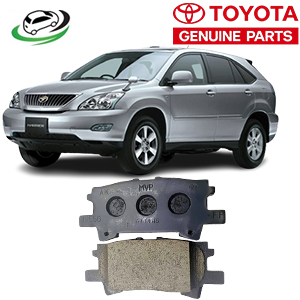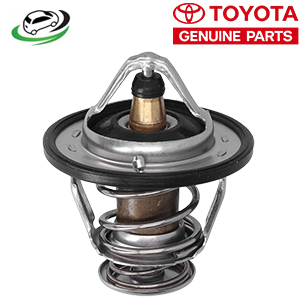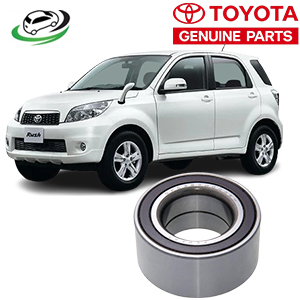-14%
Get Toyota Rush J210E Front Wheel Bearing 90043 63369
Front wheel bearings are essential components in the automotive world, designed to enable smooth, friction-free rotation of the wheels while supporting the weight of the vehicle. They are crucial for safe driving, contributing to the overall performance, handling, and durability of the vehicle. In this guide, we will explore the various aspects of front wheel bearings, including their functions, types, common signs of failure, and tips for maintenance.
The Function of Front Wheel Bearings
The primary role of front wheel bearings is to reduce friction between the wheel and axle, allowing the wheels to spin freely while supporting the vehicle’s weight. Located within the hub assembly, these bearings ensure that the wheel can rotate smoothly with minimal resistance, thus providing better fuel efficiency and reducing wear and tear on other components like tires and suspension parts.
When a car is in motion, the wheels experience a significant amount of stress and pressure. Front wheel bearings are designed to handle these forces while maintaining stability. They allow the wheel to turn efficiently while absorbing road shocks, vibrations, and lateral loads.
Components of a Front Wheel Bearing Assembly
A front wheel bearing is a relatively simple yet robust mechanical component. Here are the key parts of a typical front wheel bearing assembly:
- Bearings: The actual bearings can either be ball bearings or roller bearings. These are enclosed in a metal case and lubricated with grease to reduce friction.
- Hub: The hub is the part that houses the bearing and provides a mounting surface for the wheel and brake rotor. It also contains the studs for securing the wheel.
- Seals: Seals are critical to protecting the bearing from contaminants like dirt, water, and debris, ensuring that the grease inside stays clean and effective.
- Grease: Lubricating grease is packed into the bearing assembly to minimize friction and heat buildup during rotation.
Types of Front Wheel Bearings
There are two main types of front wheel bearings commonly used in modern vehicles:
- Ball Bearings
- Composition: Ball bearings consist of steel balls housed in a circular raceway. The design allows the balls to rotate with minimal friction between the inner and outer races.
- Benefits: Ball bearings are versatile, capable of handling both radial (up and down) and thrust (side to side) loads. They are typically used in passenger cars and light vehicles due to their efficiency in normal driving conditions.
- Drawbacks: While they can handle different types of loads, ball bearings are not as durable under extreme conditions, such as heavy towing or off-road driving.
- Roller Bearings
- Composition: Roller bearings use cylindrical rollers instead of balls, allowing a larger contact area between the rollers and raceways.
- Benefits: Roller bearings are better suited for handling heavy loads, such as in trucks, SUVs, and vehicles used for off-road driving. They offer excellent support for radial loads, making them ideal for more demanding applications.
- Drawbacks: While roller bearings excel at handling heavy loads, they are not as effective at managing thrust loads. This makes them less suitable for vehicles requiring a balance between radial and thrust load handling.
Front Wheel Bearing Designs
Wheel bearings are typically integrated into the hub assembly, and there are two main designs:
- Serviceable Bearings: Older vehicles often use this type of wheel bearing, where the bearings can be cleaned, repacked with grease, and reused. These require regular maintenance to ensure longevity.
- Sealed Bearing Assemblies: Most modern vehicles come with sealed bearing assemblies, where the bearings are permanently lubricated and enclosed in the hub. These are maintenance-free but require complete replacement when they fail.
Benefits of High-Quality Front Wheel Bearings
- Improved Vehicle Handling: Properly functioning wheel bearings ensure smooth and responsive steering. The reduced friction provided by high-quality bearings improves handling and overall driving comfort.
- Enhanced Fuel Efficiency: Efficient wheel bearings reduce rolling resistance, which allows the wheels to spin freely. This can lead to better fuel economy.
- Increased Longevity of Vehicle Components: By minimizing friction and reducing the stress on other parts, such as the tires and suspension, quality wheel bearings can contribute to the extended lifespan of these components.
- Quieter Operation: Good bearings prevent excessive noise, vibrations, and humming, which are often signs of wear or damage. High-quality bearings ensure a quiet and comfortable driving experience.
- Safety: Front wheel bearings are critical for safe braking and steering. A failing bearing can lead to unpredictable handling or, in extreme cases, the wheel detaching from the vehicle, posing a serious safety risk.
Signs of a Failing Front Wheel Bearing
Front wheel bearings are subject to significant wear and tear due to the constant rotation and the load they support. It is important to recognize the signs of a failing wheel bearing to address the issue before it leads to severe damage or safety hazards.
- Unusual Noises: A common symptom of a bad wheel bearing is a growling, humming, or grinding noise coming from the wheel area. The sound often becomes more noticeable when turning or accelerating and may vary in intensity depending on speed.
- Vibration in the Steering Wheel: If you notice excessive vibration or wobbling in the steering wheel, especially while driving at high speeds, it could be due to a faulty wheel bearing. This occurs because the bearing is no longer holding the wheel assembly securely.
- Uneven Tire Wear: Worn-out bearings can cause uneven distribution of weight on the tire, leading to uneven tire wear. If one tire shows more wear than others, it could be a sign of a bad wheel bearing.
- Loose or Wobbly Wheels: If you notice that the wheel seems to have more play or movement than usual, it could be a sign that the wheel bearing is failing.
- ABS Failure: Modern vehicles are equipped with Anti-lock Braking Systems (ABS), which often work in conjunction with the wheel bearing assembly. A damaged bearing can trigger ABS warnings or cause the system to malfunction.
- Increased Stopping Distance: A failing wheel bearing can cause the vehicle to take longer to stop, as the wheel may not rotate as freely.
Maintenance Tips for Front Wheel Bearings
Proper care and maintenance can extend the life of your front wheel bearings and ensure the safety of your vehicle. Here are some tips:
- Regular Inspection: Wheel bearings should be inspected periodically, especially during routine maintenance or tire changes. Check for signs of wear or play in the wheel, as well as unusual noise or vibration.
- Greasing Serviceable Bearings: If your vehicle has serviceable bearings, it is important to repack them with grease periodically. This helps reduce friction and heat buildup.
- Seal Integrity: Ensure that the seals surrounding the bearings are intact and in good condition. Damaged seals can allow dirt, water, and debris to enter the bearing assembly, causing contamination and premature wear.
- Avoid Overloading: Overloading your vehicle puts extra stress on the wheel bearings, causing them to wear out faster. Always stay within the vehicle’s load capacity.
- Timely Replacement: If a bearing starts to fail, it’s important to replace it as soon as possible to avoid further damage to the wheel assembly or even the axle.
Conclusion
Front wheel bearings play a vital role in ensuring smooth, safe, and efficient vehicle operation. They bear the weight of the car, manage high rotational speeds, and absorb road shocks, making them indispensable components of the wheel assembly. Understanding the signs of wear, performing regular maintenance, and replacing faulty bearings promptly are essential to ensuring optimal vehicle performance and safety.
By using high-quality bearings and adhering to proper maintenance practices, you can extend the life of your front wheel bearings and prevent costly repairs down the line, ensuring a safer and smoother driving experience for the long term.
Follow us on Facebook for more parts.




Reviews
Clear filtersThere are no reviews yet.